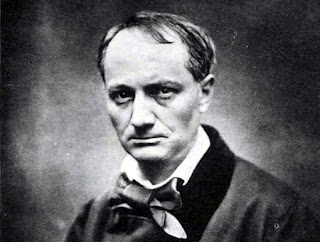Well, it is officially summer. I have discarded every handout, binder, and notebook that I used for school, erasing any trace of the infamously treacherous Junior year. The sun is shining, well, not today. But it has undoubtedly gotten hotter, which, I like for a few days at a time (my family calls me "clammy sammy").
 |
| My Mom's Salad |
Summer also means endless hours of unscheduled, laid-back summer days. I have already taken advantage of many of these days, however, yesterday I decided to get off the couch and be a flâneur.
The day began at 11:00 when I woke up, it is summer after all. My mom had a haircut on the East Side so we decided to venture out of the safety of the Upper West Side and have lunch on the Upper East Side at Via Quadronno on 73rd between 5th and Madison. I love Via Quadronno. One of my best friends, and my token Upper East Sider, took me there for the first time this year and I just love it. I love the food, the atmosphere, the location, and even that one waiter who is a little bit too friendly. For lunch, my mother got a delicious looking salad, topped with Parmesan cheese and tuna. I ordered my usual panini: the
Primavera. The
Primavera is a panini stuffed with goat cheese, tomatoes, chopped romaine, and a black olive paté. When I ate this panini, I felt like I was one of the three graces depicted in Botticelli's infamous painting
Primavera, light and whimsical. The three graces in his painting are enjoying the return of spring, just as I was enjoying the return of summer. The panini, to me, embodied exactly what I was feeling at that moment: free and uninhibited. To finish the meal, my mom and I both ordered hot beverages. My mom, the fervent coffee drinker, ordered a cappuccino, and I, the fervent chocolate consumer, ordered a hot chocolate.
 |
| My Panini, The Primavera |
We had some time to spare so we headed over to the Metropolitan Museum of Art. I absolutely love art and art history so any chance to look at the great works is a treat for me. My mom and I walked through galleries housing the works of Adelaide Labille-Guiard, Jacques-Louis David, Degas, and Manet, just to name a few. We ultimately ended up at our final destination which was the Alexander McQueen exhibit.
The exhibit was incredible. I marveled at not only the pieces but also at the execution of the exhibition. Each room was so well thought out and intriguing. The flow between the design of the garments and the design of the individual rooms was flawless. McQueen was such a visionary. He was a true artist, not so different than David or Manet. He was not afraid to push the boundaries of fashion to make people feel something. His clothes are not superficial, I suppose they could be, but really they are as dense in meaning and metaphor as David's
Death of Socrates.
 |
| An Alexander McQueen Dress |
The MET is often admonished for being too much in the past. The museum has been criticized for not jumping into the contemporary art world in regards to their exhibitions. This exhibit is the perfect step into the modern world for the MET. McQueen was emblematic of innovation and modernity. He used technology, such as the hologram of Kate Moss (my personal favorite), to convey a message about something material, something hand-made. He faced the same problems that the masters of art faced; his ability to overcome the obstacles makes him a master too. The quintessential problem for artists is that they are tasked to create something real out of something fake. They choose to depict 3-D images on 2-D surfaces. However, great artists embrace the limitations of their mediums to make statements. McQueen accentuated his fabrics and drapery, and in doing so he made clear that his clothes were made from fabric and stitches, yet he did not deny his clothes a deeper meaning. What set McQueen apart from other designers was his intentions. He did not make clothes just to make clothes. He made clothes to present something unique to the general public.
It is clear that McQueen belongs in the Metropolitan Museum of Art even past the end of this exhibition.









